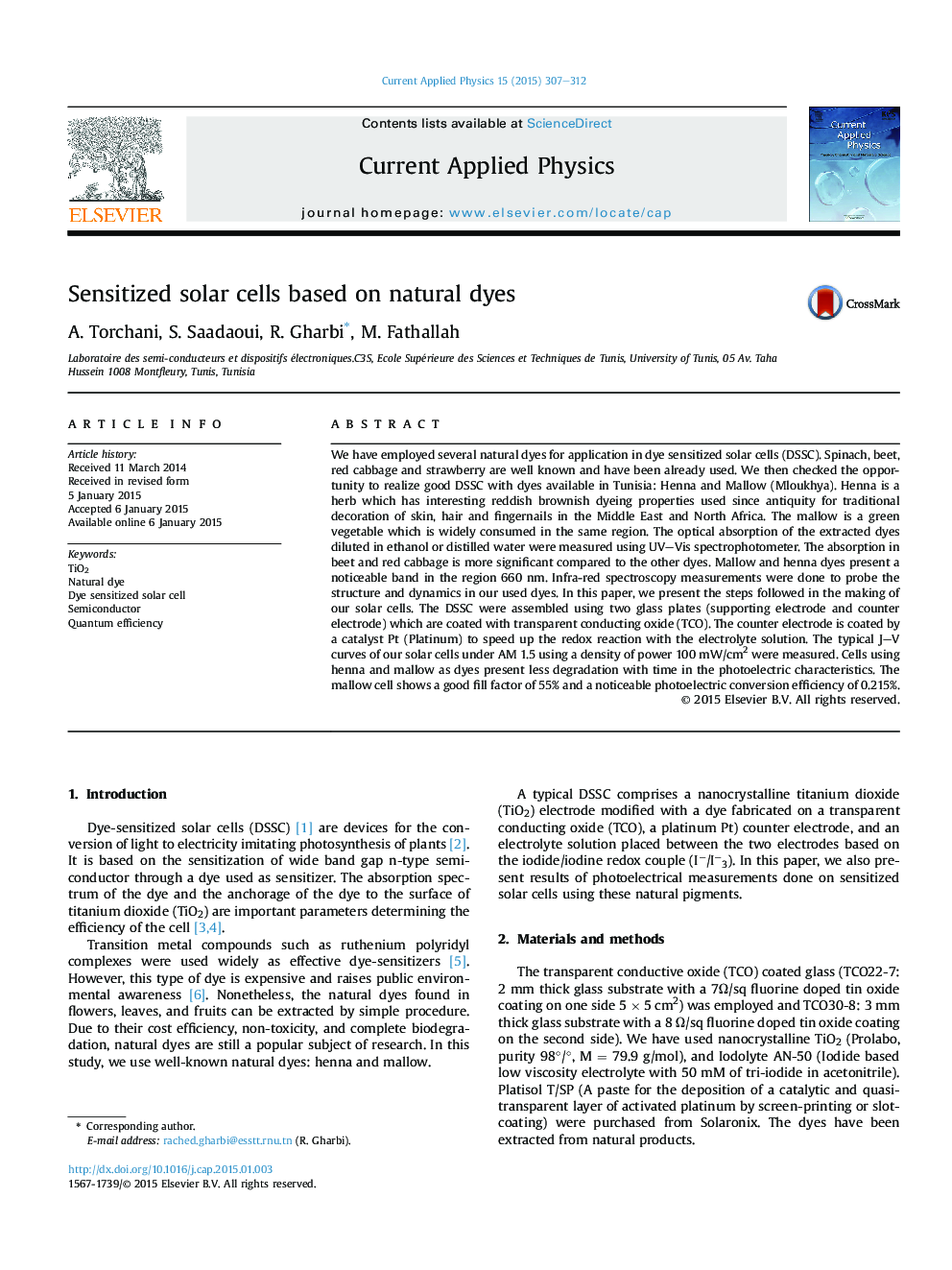| کد مقاله | کد نشریه | سال انتشار | مقاله انگلیسی | نسخه تمام متن |
|---|---|---|---|---|
| 1785696 | 1023390 | 2015 | 6 صفحه PDF | دانلود رایگان |
• Study of several natural dyes extracted from fruits, vegetables and local plants.
• Mallow and Henna dyes present absorption spectra with noticeable band at 660 nm.
• Constituents of used dyes are chlorophylls, betanin, anthocyanins, lawsone scopoletin.
• Sensitized local dyes have more stable photovoltaic characteristics.
We have employed several natural dyes for application in dye sensitized solar cells (DSSC). Spinach, beet, red cabbage and strawberry are well known and have been already used. We then checked the opportunity to realize good DSSC with dyes available in Tunisia: Henna and Mallow (Mloukhya). Henna is a herb which has interesting reddish brownish dyeing properties used since antiquity for traditional decoration of skin, hair and fingernails in the Middle East and North Africa. The mallow is a green vegetable which is widely consumed in the same region. The optical absorption of the extracted dyes diluted in ethanol or distilled water were measured using UV–Vis spectrophotometer. The absorption in beet and red cabbage is more significant compared to the other dyes. Mallow and henna dyes present a noticeable band in the region 660 nm. Infra-red spectroscopy measurements were done to probe the structure and dynamics in our used dyes. In this paper, we present the steps followed in the making of our solar cells. The DSSC were assembled using two glass plates (supporting electrode and counter electrode) which are coated with transparent conducting oxide (TCO). The counter electrode is coated by a catalyst Pt (Platinum) to speed up the redox reaction with the electrolyte solution. The typical J–V curves of our solar cells under AM 1.5 using a density of power 100 mW/cm2 were measured. Cells using henna and mallow as dyes present less degradation with time in the photoelectric characteristics. The mallow cell shows a good fill factor of 55% and a noticeable photoelectric conversion efficiency of 0.215%.
Journal: Current Applied Physics - Volume 15, Issue 3, March 2015, Pages 307–312
